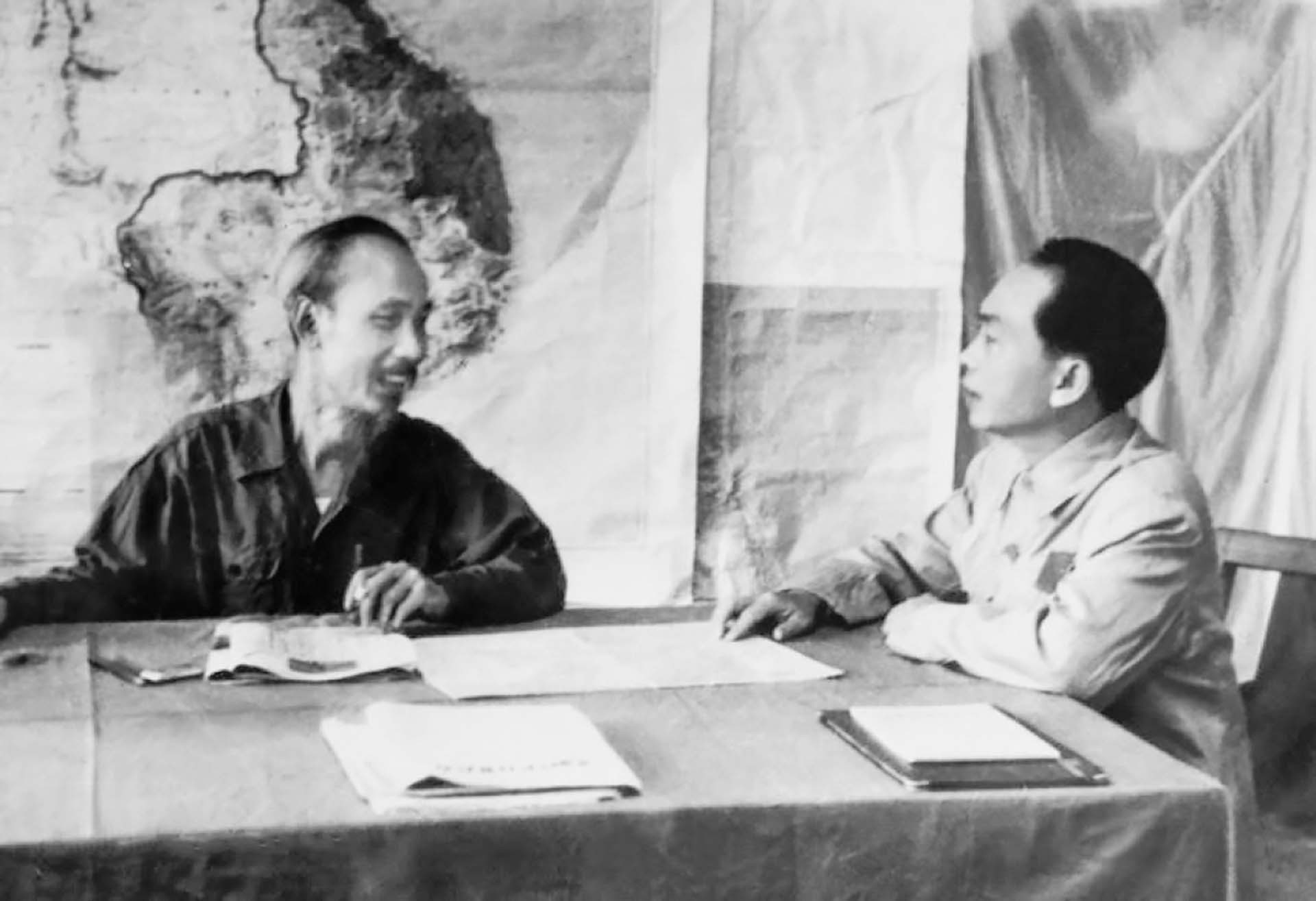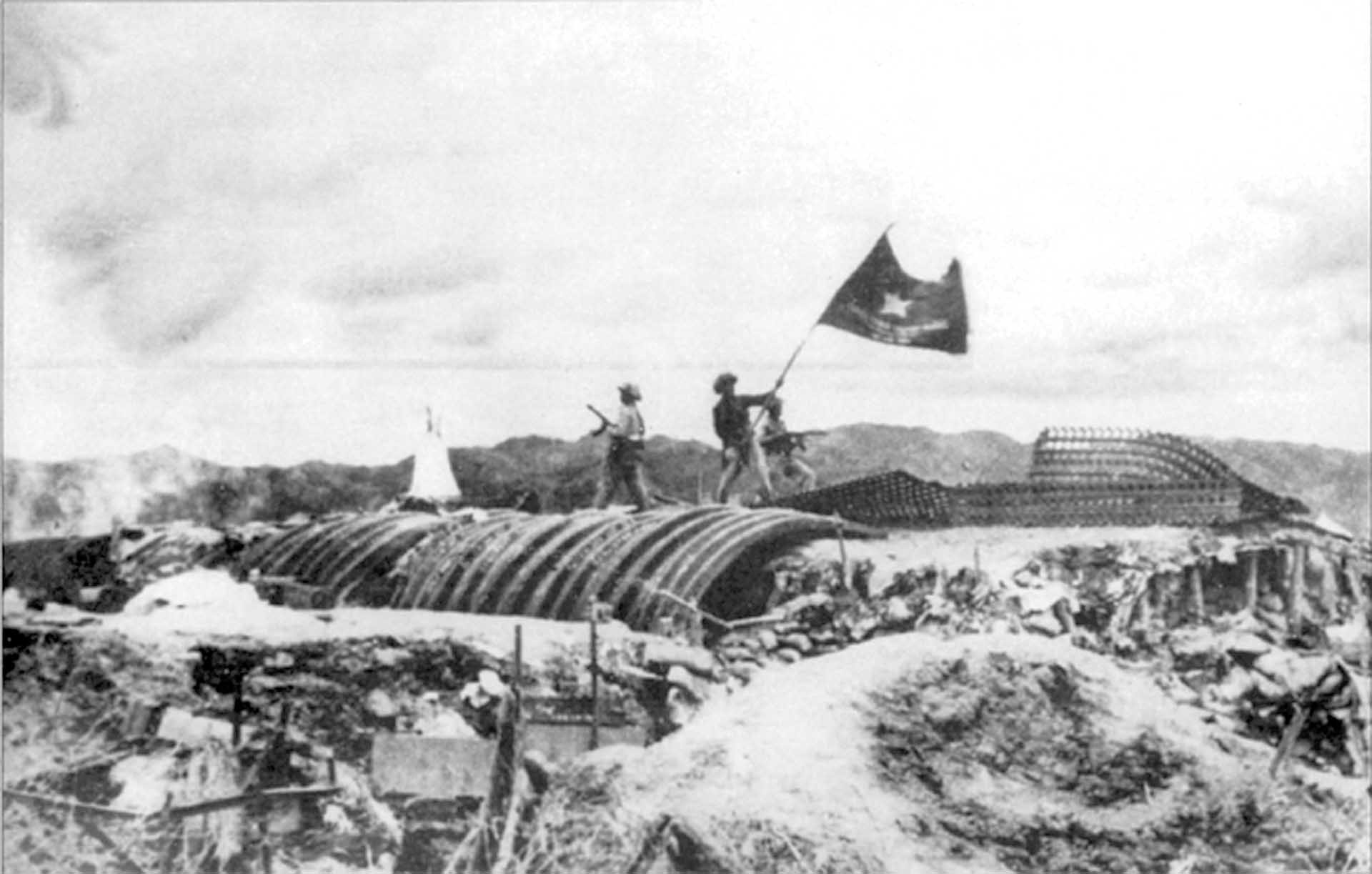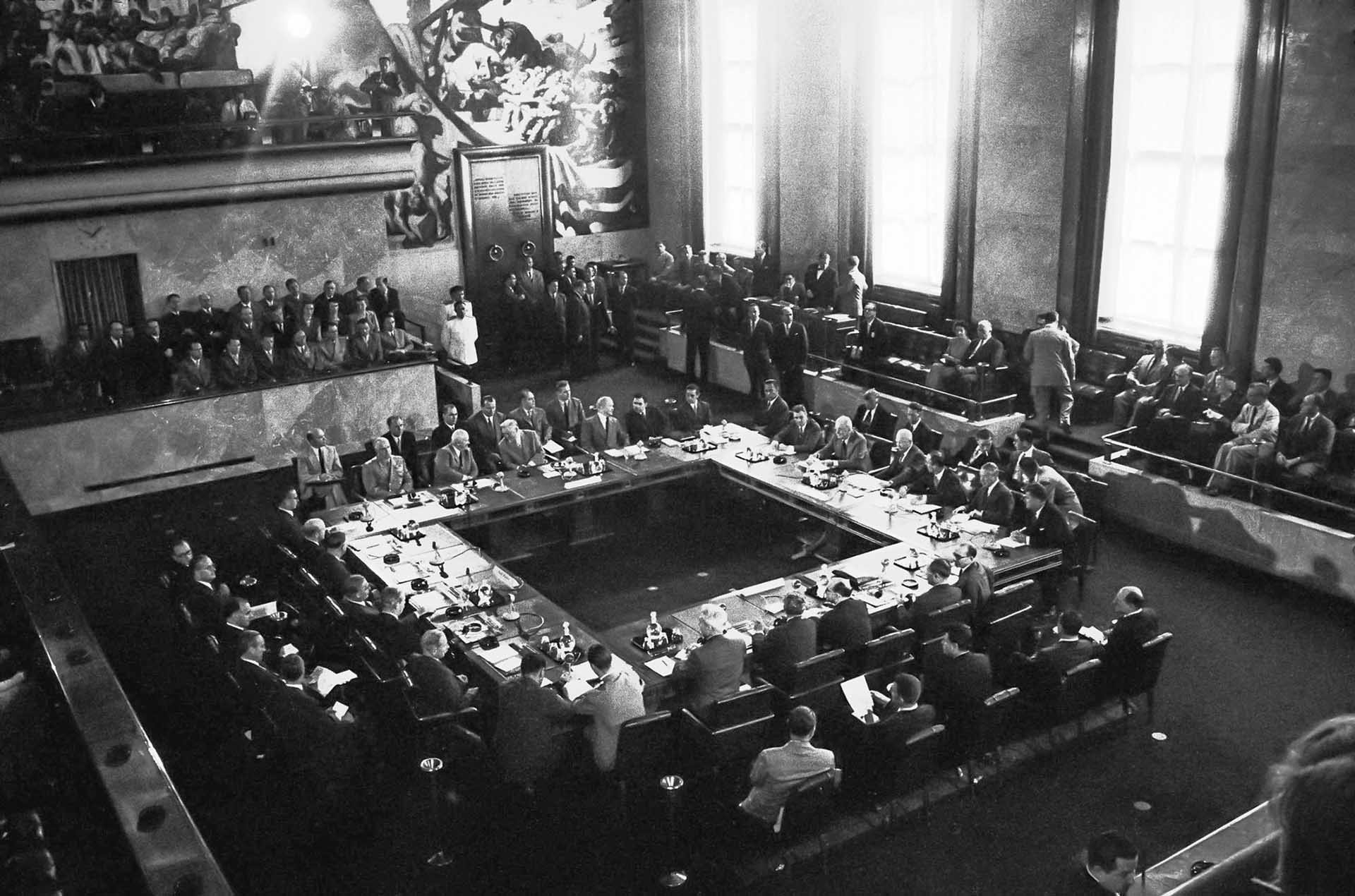
From Dien Bien Phu to Geneva: The Winner’s pose
Latest
In world military history, except for a few exceptions where one side in the conflict was defeated and accepted the surrender, the end of a war is mostly influenced by factors such as comparison of positions and strength on the battlefield; strategic calculations and maneuvers of the warring parties; the impact of international factors, etc. The ending of the war in Indochina (1945-1954) also had to bear the influence of these factors, but it had its distinctive features, very different from how the Korean War or many other wars in the world ended.
 |
| President Ho Chi Minh and General Vo Nguyen Giap discussed the plan for the Dien Bien Phu campaign in 1954. |
Historical Rendezvous
Entering 1953, after nearly seven years of their utmost efforts, the colonial aggression war by France against Vietnam not only failed to achieve any significant progress but also increasingly sank deeper into crisis.
In May 1953, the French Government was forced to send four-star General H. Navarre to serve as the Commander in Chief of the French expeditionary forces in Indochina, “seeking an honorable way out” for France.
On July 24, 1953, a military plan named Navarre was officially approved by the Defense Council of France. This was considered the final and highest effort of France and the United States in the war in Indochina. They believed that with the Navarre Plan, French military victory was within reach.
Meanwhile, at the Viet Bac base in mid-January 1953, the Party Central Committee’s fourth meeting held discussions regarding the strategic direction for the 1953-1954 Winter-Spring campaign. All military “machinery” was deployed and operated according to this direction.
In September 1953, the Politburo's Meeting approved the Combat Plan of the General Staff, designating the Northwest as the strategic offensive direction for the 1953-1954 Winter-Spring campaign. Interestingly, neither the Navarre Plan nor the Combat Plan of the General Staff mentioned Dien Bien Phu.
Although not mentioned, on the night of November 20, 1953, the discovery that the 316 Division was advancing towards the Northwest prompted the French forces to hastily parachute six Battalions into Dien Bien Phu. Explaining this decision, Navarre argued that “only by occupying Dien Bien Phu could Lai Chau and the entire strategic area of Upper Laos be defended”. In a short period, France turned Dien Bien Phu into a strong fortress with three sectors, forming eight strongholds with 49 outposts, concentrating about 16,000 troops (7/10 of the total force stationed in Indochina).
General, Commander-in-Chief Vo Nguyen Giap believed that regardless of how the situation changed in the future, the French paratrooper drop at Dien Bien Phu was fundamentally advantageous for us.
Thus, Dien Bien Phu, initially not mentioned in the military plans of both sides for the 1953-1954 Winter-Spring campaign, became a “historical rendezvous”.
 |
| On May 7, 1954, the Dien Bien Phu victory directly impacted the success of the Geneva Conference on Indochina. |
THE FINAL SHOWDOWN
What's quite interesting is that both sides feared the other side might withdraw from the “Dien Bien Phu game”. It's no coincidence that when assigning the task to General Vo Nguyen Giap before heading to the battlefield, President Ho Chi Minh emphasized that this was a very important battle, with multi-faceted significance in politics, military and diplomacy, so it must only be fought if victory was assured; if victory was uncertain, then don't fight!
With the slogan “All for the front line, all for victory”, the rear areas of the Viet Bac liberated zone, Region III, Region IV, Region V, guerrilla zones and guerrilla bases in the North all concentrated their efforts and resources for the Dien Bien Phu Front. In this campaign, Vietnam concentrated nearly 55 thousand troops on both fronts; mobilized 260,000 laborers, 20,991 bicycles and delivered over twenty thousand tons of various types of food and supplies to the Front.
By advancing towards the Northwest, the Viet Minh forced the French forces to hastily parachute their elite units into Dien Bien Phu, turning it into a strong fortress that was then trapped and isolated in difficult terrain and unfavorable weather conditions. Through strategic measures, and creative and effective campaigns, the Viet Minh proactively created opportunities and seized them, compelling the French forces to accept a decisive battle nearly a year earlier than planned.
The Vietnamese Strategic Command not only attracted, isolated, and pinned down a large force of elite French troops at Dien Bien Phu for destruction, but also timely directed the battlefields across the country to intensify coordination with the Dien Bien Phu Front; mobilized the strength of the entire nation, effectively solved the issue of ensuring logistics for the large-scale campaign in distant rear areas.
THE KEY TO SUCCESS
Not only successful in strategic direction, but the Dien Bien Phu campaign also showed many remarkable features in campaign command.
The Viet Minh did not accept a general engagement within a short period as initially planned to last for three nights and two days, but timely changed the combat philosophy from “strike fast, resolve quickly” to “strike firmly, advance firmly”, a combating way suitable for the combat capabilities of the Vietnamese army at that time, and in line with the balance of forces and the disposition of the Dien Bien Phu fortress.
Through this way of fighting, in reality, the Dien Bien Phu campaign went through three waves of attacks lasting 56 days and nights. With the quite effective “encircling siege” tactic, the forces surrounded, isolated, and successively destroyed each stronghold, and cluster of strongholds, ultimately moving towards the complete annihilation of the Dien Bien Phu fortress complex. The decision to change the combat philosophy from “strike fast, resolve quickly” to “strike firmly, advance firmly” is considered the key to unlocking the door to success for the Dien Bien Phu campaign. This decision is seen as a historic one in a historic campaign. It demonstrates the strategic vision and astute military thinking of General Vo Nguyen Giap and of the Party Committee, the Command of the Campaign, along with the Advisory Board.
After 56 days and nights of mental and physical struggle, through the strength of national unity, the Vietnamese army and people have made Dien Bien Phu victory “resounded across the five continentals and shock the globe”.
 |
| Overview of the Geneva Conference in 1954. |
HARD-EARNED EXPERIENCE
One day after the victory at Dien Bien Phu, the Geneva Conference officially convened to discuss the issue of Indochina. Thus, it was only after the “Dien Bien Phu event” that the opportunity for an international forum on ending the Indochina war truly arrived, even though as early as November 1953, in an interview with the Expressen newspaper (Sweden) regarding the prospects for resolving the issue of peace in Vietnam, President Ho Chi Minh expressed the goodwill of the DRV Government, which was ready to negotiate with France to seek a peaceful solution based on France truly respecting and recognizing the independence and sovereignty of Vietnam. After 75 days and nights with 31 plenary sessions, the Geneva Conference concluded with the signing of the Geneva Accords on the cessation of hostilities, restoring peace in Indochina.
Vietnam attended the Conference in the position of the victor, and the Geneva solution, although it encompassed both political and military issues, did not fully reflect the victories that the Vietnamese people achieved on the battlefield, especially the victory at Dien Bien Phu. This is understandable because the Geneva Conference was an international forum arranged by major powers, deciding the composition, timing, steps, and even the outcome.
At this forum, the compromise of the major powers led to a somewhat “loose” sense of responsibility among the participating parties, and the refusal of the United States to sign the Final Declaration of the Conference provided them with a “pretext” to implement their intention to replace France in Vietnam. The aftermath of the Geneva Conference was that the general elections did not take place, and the Vietnamese people had to continue their 21-year struggle with many losses and sacrifices to regain full independence and national unity.
However, it can not be denied that the Geneva Accords forced colonial France to end the war and recognize the basic national rights of the Vietnamese people. Although the country remained divided, we had a liberated North, which served as a foundation for building a major strategic rear for conducting the resistance against the United States and the national salvation thereafter. The credibility and position of the Democratic Republic of Vietnam were highly regarded on the international stage. The Geneva Conference and Geneva Accords provided Vietnam with valuable negotiation experience and equipped the Vietnamese military and people with the necessary tools to face the challenges of the new type of colonial invasion by American Imperialism afterward.
History has no “ifs”, however, without the victory at Dien Bien Phu and other military successes on the battlefield, it would have been difficult to achieve the results at the Geneva Conference negotiating table.












